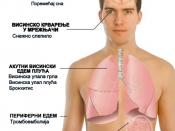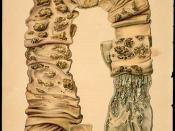Metachromatic Leukodystrophy
Metachromatic Leukodystrophy (MLD) is a member of a class called lysosomal storaged disorders. In these diseases patients don't have the protein needed to metabolize the food we eat. MLD is an inherited disease that is caused by the absence of the enzyme
arylsufatasase A. In which causes a material called cerebroside sulfate to accumulate in the cells.
There are three forms of MLD, they are: late infantile, juvenile, and adult. Late infantile is the most common kind. Affected children have trouble walking the first year of their life. With the juvenile form, those who have the disease usually begin with the emotional disturbances and dementia and then develop symptoms similar to the infantile form but with a slower progression. With the adult form, MLD commonly begins around the age of 30 as a psychiatric disorder or progressive dementia. This illness may run over a long course, possibility averaging up to fifteen years.
The earlier you get the disease, the more rapidness in the progression. Early Cases of the disease often live for five to fifteen years; later cases can live for more than twenty years.
There are many different symptoms for each age, but here are some of the more common ones between them: their nerve function could perform abnormally, they have speech and feeding difficulties, slurring and swallowing problems decreased muscle tone, ect. All forms of Metachromatic Leukodystrophy is found to be as an autosomal recessive inheritance. This means that a person must inherit the defective gene from both of the parents.
There is no treatment for Metachromatic Leukodystrophy but there is prevention. Bone marrow transplant may delay or halt the progression of the disease in some cases. Bone marrow has been used on a number of patients with MLD. This procedure is risky and highly dependent...


